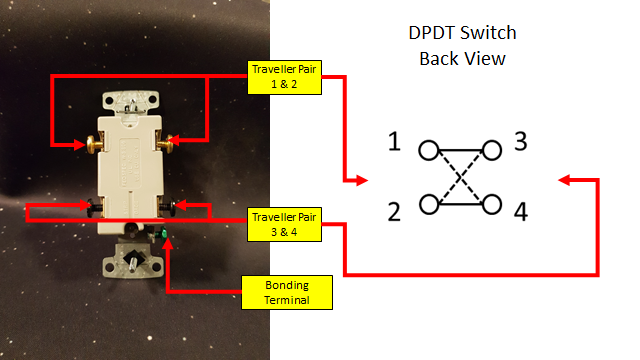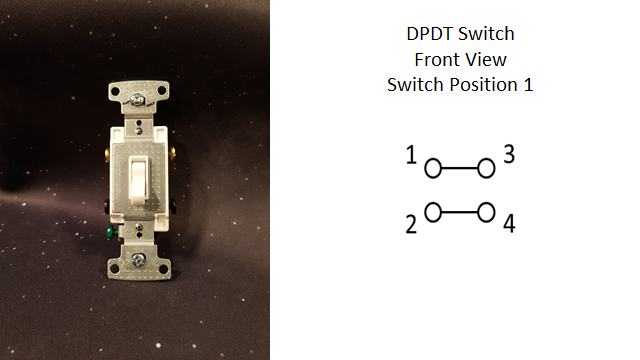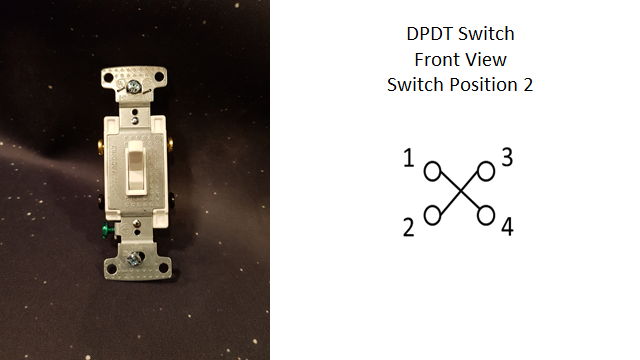29 Double-pole, double-throw (DPDT) A.K.A. The 4-way switch
Aaron Lee
The most common application of these devices is a 4-way switch, which is used in conjecture with two three-way switches to allow for lamp control from three or more locations.
As a general rule, a light can be controlled from any number of locations, providing you start and end your switching with three-way switches and use as many 4-way switches in between as necessary. For example, a lamp needs to be controlled from five different locations: to achieve this we would need two 3-way switches and three 4-way switches.
4-way switches have four terminals on them: two for traveller wires coming in, and two for traveller wires going out. The device will usually indicate which two terminals are for “incoming” and “outgoing” wires.

If the wire terminals were numbered 1,2,3 and 4 as in the diagram below, when the external handle is in the “up” position, we will have continuity between terminals 1 and 3 and between terminals 2 and 4.

If the external handle is moved to the “down” position, we will now have continuity between terminals 1 and 4 and between terminals 2 and 3.

4-way switches also do not have a marked “on” or “off” position, and so cannot be installed “upside-down”.
